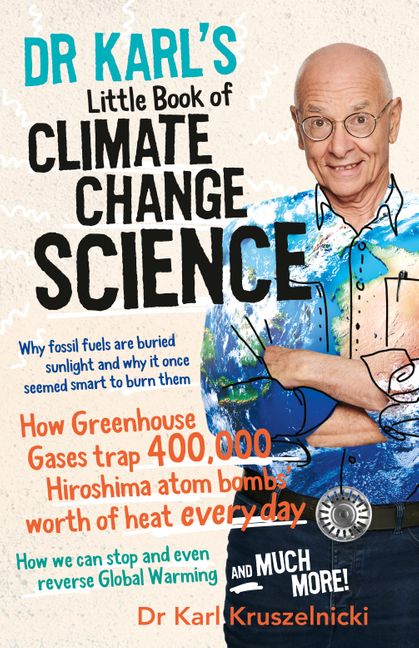Report on Ocean Acidification: A Critical Threat to Sustainable Development Goals
A recent study indicates that ocean acidification has exceeded the planetary boundary for a safe operating space, posing a significant threat to marine ecosystems and the achievement of several United Nations Sustainable Development Goals (SDGs). This report outlines the scientific basis of ocean acidification, its multifaceted impacts, and the urgent need for policy and innovation aligned with the 2030 Agenda for Sustainable Development.
1. The Scientific Challenge to SDG 14: Life Below Water
Ocean acidification is a direct consequence of increased atmospheric carbon dioxide (CO₂), a primary driver of climate change. This phenomenon directly undermines SDG 14 (Life Below Water), particularly Target 14.3, which calls to “minimize and address the impacts of ocean acidification.”
- Chemical Process: Atmospheric CO₂ dissolves in seawater, forming carbonic acid. This increases the concentration of hydrogen ions, lowering the ocean’s pH and making it more acidic.
- Ecological Impact: The increased acidity depletes available carbonate ions, which are essential building blocks for marine calcifying organisms. This process severely impacts:
- Coral reefs
- Oysters and clams
- Mollusks
- Certain species of plankton
- Ecosystem Degradation: The weakening and dissolution of these organisms’ shells and skeletons threaten the structural integrity of entire ecosystems, such as coral reefs. This compromises progress on Target 14.2 (sustainably manage and protect marine and coastal ecosystems).
2. Socio-Economic Impacts and Setbacks for Global Goals
The degradation of marine ecosystems due to acidification creates cascading effects that jeopardize food security, economic stability, and human well-being, directly challenging several SDGs.
2.1. Threats to SDG 2 (Zero Hunger) and SDG 8 (Decent Work and Economic Growth)
Coastal communities and industries reliant on marine resources face immediate and severe risks.
- Australia: The weakening of the Great Barrier Reef threatens biodiversity and a significant tourism economy. Furthermore, the national oyster aquaculture industry is experiencing substantial crop and income losses, impacting livelihoods and local economies. These impacts are a direct setback for SDG 8.
- New Zealand: The nation’s significant shellfish aquaculture industry, including mussels, oysters, and clams, is identified as highly vulnerable, threatening a key economic sector.
- Pacific Island Nations: These communities have a high dependency on reef ecosystems for food security and cultural practices. The decline in reef health and associated fish populations poses a long-term risk to achieving SDG 2 (Zero Hunger) and preserving cultural heritage.
2.2. A Challenge to SDG 10 (Reduced Inequalities) and SDG 1 (No Poverty)
Ocean acidification is a profound issue of climate justice. Coastal communities in developing nations, which have contributed least to global CO₂ emissions, are on the frontlines of its consequences. The erosion of food sources, livelihoods, and cultural stability disproportionately affects the most vulnerable populations, exacerbating inequalities and hindering efforts to eradicate poverty, in direct opposition to the principles of SDG 10 and SDG 1.
3. Innovation and Partnerships for Resilience: Advancing SDG 9 and SDG 17
In response to the crisis, scientific research and collaborative efforts are underway to build resilience, reflecting the spirit of SDG 9 (Industry, Innovation, and Infrastructure) and SDG 17 (Partnerships for the Goals).
- Selective Breeding Programs: In Australia, researchers at the Port Stephens Fisheries Institute and the University of Sydney are working to breed strains of oysters that are more resilient to acidic conditions and other climate-related stressors.
- Mitigation and Monitoring: New Zealand has established the New Zealand Ocean Acidification Observing Network (NZOA-ON) for comprehensive monitoring and is testing mitigation strategies like using waste shells to buffer acidity around mussel farms.
- Collaborative Research Platforms: The Shellfish Aquaculture Research Platform (ShARP) in New Zealand supports research aimed at enhancing the sustainability and resilience of the aquaculture industry, demonstrating a commitment to innovation.
4. Conclusion: An Urgent Call for Climate Action and Policy Coherence
The global scale of ocean acidification confirms that localized changes have aggregated into a planetary crisis. This reality underscores the indivisible nature of the SDGs. Addressing ocean acidification is not possible without aggressive global efforts to combat climate change under SDG 13 (Climate Action). As highlighted by researchers, scientific documentation must translate into immediate and impactful policy at international forums like the United Nations Ocean Conference. Achieving a sustainable future requires that the voices of affected communities are integrated into policy decisions, ensuring that actions are just, equitable, and effective in safeguarding our shared ocean for generations to come.
1. Which SDGs are addressed or connected to the issues highlighted in the article?
Explanation of Relevant SDGs
- SDG 14: Life Below Water
This is the primary SDG addressed, as the article’s central theme is ocean acidification and its devastating effects on marine ecosystems, including coral reefs (Great Barrier Reef), and marine species like oysters, clams, and plankton. It directly discusses the chemical changes in the ocean, the collapse of marine habitats, and the loss of biodiversity. - SDG 2: Zero Hunger
The article connects ocean acidification to food security. It highlights how coastal communities, particularly in the Pacific Islands, rely on reef ecosystems and local shellfish for food. The decline in fish stocks and the challenges faced by the aquaculture industry (e.g., oyster farming in Australia) pose a direct threat to food sources and sustainable food production. - SDG 8: Decent Work and Economic Growth
The economic consequences of ocean acidification are clearly outlined. The article mentions Australian oyster growers losing their income, the threat to New Zealand’s significant shellfish aquaculture industry, and the potential loss of tourism revenue in Australia, which is heavily dependent on the health of the Great Barrier Reef. This demonstrates the link between environmental degradation and economic livelihoods. - SDG 13: Climate Action
The article explicitly identifies increasing atmospheric carbon dioxide (CO₂) from climate change as the root cause of ocean acidification. It discusses the need for adaptation and building resilience within industries like aquaculture and for coastal communities facing climate-related hazards. The research mentioned aims to help the industry “prepare for what’s coming” in a changing climate. - SDG 1: No Poverty
The article frames ocean acidification as a “justice issue,” noting that coastal communities who have contributed least to the problem are the most vulnerable to its impacts. The loss of livelihoods from fishing and aquaculture threatens to increase poverty and vulnerability for these populations, reducing their resilience to environmental and economic shocks.
2. What specific targets under those SDGs can be identified based on the article’s content?
-
SDG 14: Life Below Water
- Target 14.2: By 2020, sustainably manage and protect marine and coastal ecosystems to avoid significant adverse impacts, including by strengthening their resilience, and take action for their restoration in order to achieve healthy and productive oceans.
The article discusses the weakening of the Great Barrier Reef, the collapse of its structure, and the subsequent loss of biodiversity. It also highlights efforts to enhance the resilience of marine ecosystems and species, such as breeding hardier oysters. - Target 14.3: Minimize and address the impacts of ocean acidification, including through enhanced scientific cooperation at all levels.
This is the core focus of the article. It details the causes and impacts of ocean acidification and showcases scientific cooperation between institutions like the Port Stephens Fisheries Institute (PSFI), the University of Sydney, and the New Zealand Ocean Acidification Observing Network (NZOA-ON). - Target 14.a: Increase scientific knowledge, develop research capacity and transfer marine technology… in order to improve ocean health.
The article is replete with examples of this, from research into oyster physiology to the development of selectively bred, climate-resilient oyster strains and field experiments testing mitigation strategies like using waste shells for aeration. - Target 14.b: Provide access for small-scale artisanal fishers to marine resources and markets.
The article notes the threat to small-scale fishers, such as the “fisher in Fiji who notices fewer shellfish in their nets,” indicating that the degradation of marine resources jeopardizes their access and livelihoods.
- Target 14.2: By 2020, sustainably manage and protect marine and coastal ecosystems to avoid significant adverse impacts, including by strengthening their resilience, and take action for their restoration in order to achieve healthy and productive oceans.
-
SDG 2: Zero Hunger
- Target 2.4: By 2030, ensure sustainable food production systems and implement resilient agricultural practices that increase productivity and production, that help maintain ecosystems, [and] that strengthen capacity for adaptation to climate change…
The challenges faced by the shellfish aquaculture industry in Australia and New Zealand are a direct threat to a sustainable food production system. The research into breeding resilient oysters is a clear example of an effort to implement resilient practices and adapt to climate change.
- Target 2.4: By 2030, ensure sustainable food production systems and implement resilient agricultural practices that increase productivity and production, that help maintain ecosystems, [and] that strengthen capacity for adaptation to climate change…
-
SDG 8: Decent Work and Economic Growth
- Target 8.9: By 2030, devise and implement policies to promote sustainable tourism that creates jobs and promotes local culture and products.
The article states that in Australia, “reefs also drive significant tourism revenue.” The degradation of the Great Barrier Reef due to acidification directly threatens this form of sustainable tourism and the jobs it creates.
- Target 8.9: By 2030, devise and implement policies to promote sustainable tourism that creates jobs and promotes local culture and products.
-
SDG 13: Climate Action
- Target 13.1: Strengthen resilience and adaptive capacity to climate-related hazards and natural disasters in all countries.
The article describes how the aquaculture industry is trying to adapt by breeding more resilient oysters. It also discusses the need for coastal communities to enhance their resilience to the impacts of climate change, such as ocean acidification.
- Target 13.1: Strengthen resilience and adaptive capacity to climate-related hazards and natural disasters in all countries.
-
SDG 1: No Poverty
- Target 1.5: By 2030, build the resilience of the poor and those in vulnerable situations and reduce their exposure and vulnerability to climate-related extreme events and other economic, social and environmental shocks and disasters.
The article emphasizes that “coastal communities who contributed the least to this crisis who are now on the frontlines of its consequences,” highlighting their vulnerability to the loss of food security and income, which are environmental and economic shocks.
- Target 1.5: By 2030, build the resilience of the poor and those in vulnerable situations and reduce their exposure and vulnerability to climate-related extreme events and other economic, social and environmental shocks and disasters.
3. Are there any indicators mentioned or implied in the article that can be used to measure progress towards the identified targets?
- Average marine acidity (pH)
This is the primary indicator for Target 14.3. The article is built around the “steady drop in pH” and mentions the “New Zealand Ocean Acidification Observing Network (NZOA-ON),” which was established to “document the status and progress of ocean acidification,” directly implying the systematic measurement of pH levels. - Health and coverage of coral reefs
This is an implied indicator for Target 14.2. The article uses the condition of the Great Barrier Reef as a key example, mentioning “weakening coral skeletons,” “mass bleaching,” and the collapse of the “reef structure.” The health and extent of such ecosystems are a clear measure of progress. - Productivity of aquaculture
This is an implied indicator for Target 2.4. The article provides negative examples of this indicator, such as “Australian oyster growers losing their crops and their income” and a “crop collapses after a sudden shift in water chemistry.” Conversely, the success of breeding resilient oysters would be measured by their survival and growth rates, i.e., their productivity. - Size of fish catches
This is a directly mentioned indicator for targets related to food security and ecosystem health (e.g., 14.4, 2.4). The article states, “Catch sizes will (and already are) shrinking,” providing a concrete metric for the decline in marine resources available to fishing communities. - Tourism revenue from marine ecosystems
This is an implied indicator for Target 8.9. The article states that in Australia, “reefs also drive significant tourism revenue,” directly linking an economic indicator (revenue) to the health of the marine environment. A decline in this revenue could indicate a failure to protect the ecosystem.
4. Table of SDGs, Targets, and Indicators
| SDGs | Targets | Indicators Identified in Article |
|---|---|---|
| SDG 14: Life Below Water |
14.2: Protect marine and coastal ecosystems. 14.3: Minimize and address ocean acidification. 14.a: Increase scientific knowledge and research capacity. 14.b: Provide access for small-scale fishers to resources. |
– Health and structural integrity of coral reefs. – Average marine acidity (pH) levels. – Establishment of scientific research and monitoring networks (e.g., NZOA-ON). – Size of fish and shellfish catches for local communities. |
| SDG 2: Zero Hunger | 2.4: Ensure sustainable and resilient food production systems. | – Productivity and survival rates of aquaculture crops (e.g., oyster farm yields). – Availability of seafood for food-secure communities. |
| SDG 8: Decent Work and Economic Growth | 8.9: Promote sustainable tourism. | – Income from aquaculture industry. – Tourism revenue derived from marine ecosystems like reefs. |
| SDG 13: Climate Action | 13.1: Strengthen resilience and adaptive capacity to climate-related hazards. | – Development and success of adaptive strategies (e.g., breeding resilient oyster strains). |
| SDG 1: No Poverty | 1.5: Build the resilience of the poor and vulnerable to environmental shocks. | – Stability of livelihoods and income for coastal communities dependent on marine resources. |
Source: cosmosmagazine.com






